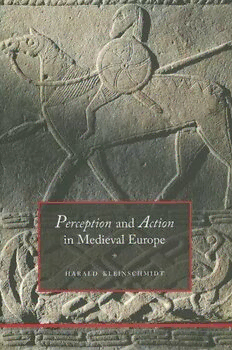
Perception and Action in Medieval Europe PDF
210 Pages·2005·4.394 MB·English
Most books are stored in the elastic cloud where traffic is expensive. For this reason, we have a limit on daily download.
Preview Perception and Action in Medieval Europe
Description:
Can dancers and singers dance and sing for one year and one day without drinking, eating and sleeping? Can pictures be made to speak to their viewers? Can lavender purify the soul? The modern mind denies that such occurrences are possible and relegates to the fantastic Middle Ages reports that they happened. In his new book Harald Kleinschmidt traces the logic of perception and action behind these and many other strange stories about the use of the five senses and the doings of people in medieval Europe. He argues that modern Western rationalism is peculiar in postulating an opposition between perceivers and the targets of their curiosity, actors and their environments or, in general terms, subject and object. He shows that medieval standards of perception and patterns of action rested on an interactionist logic according to which perceiving and acting persons conceived of their doings as correlated and mutually dependent. He describes that the perfectly rational logic behind these conceptions. He demonstrates that the assumption of an opposition between subject and object resulted from fundamental changes of standards of perception and patterns of action that took place during the Middle Ages and prepared the ground for the emergence of the peculiar logic of modern Western rationalism. In five chapters, the book focuses on the conceptual histories of the five senses, patterns of action and the correlated aesthetic and ethical theories and traces them in a wide range of textual and pictorial, narrative and normative sources. The book describes the rationale of the medieval mind in general and is also of interest for intellectual historians, historians of aesthetics and ethics, art and music.
See more
The list of books you might like
Most books are stored in the elastic cloud where traffic is expensive. For this reason, we have a limit on daily download.
